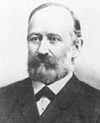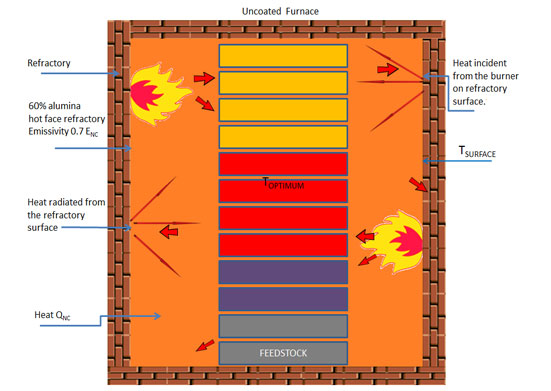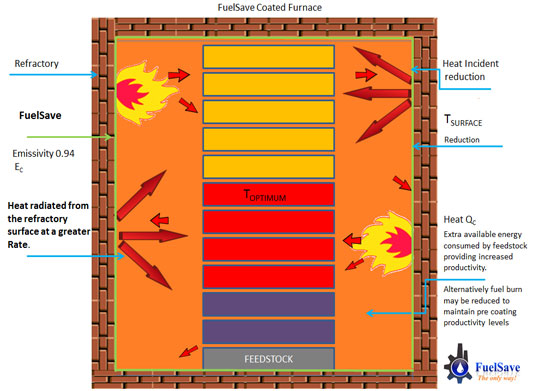
Austrian Physicist
Josef Stefan Boltzmann
Any refractory substrate, irrespective of type, density or chemical composition, that is treated with an application of FuelSave, will see a radical transformation of surface characteristics, particularly in relation to emissivity. Even materials with extremely low re-radiative capacity will, once FuelSave is applied, exhibit emissivity levels between 0.85 – 0.94, therefore replicating the properties of a grey body material. Such increases in the emissivity of a refractory substrate result in greater energy contribution by the furnace working lining. Fig 2 & 3 below demonstrate this effect.

Fig 2 Uncoated Refractory

Fig 3 FuelSave Coated Refractory
Any Increases in the levels of available energy will contribute to either a reduction of energy consumption or improved productivity.
FUELSAVE coated refractory surfaces help prevent dust, soot and ash adhesion, which preserves the refractory surface and ensures optimum emissivity is maintained and subsequent benefits are sustained long term. Moreover FuelSave protects refractory from the corrosive effects of VOC’s sulphur and aggressive process contaminants.
The Stefan–Boltzmann law describes the power radiated from a black body in terms of its temperature. Specifically, the Stefan–Boltzmann law states that the total energy radiated per unit surface area of a black body across all wavelengths per unit time (also known as the black-body radiant emittance or radiant exitance) is directly proportional to the fourth power of the black body’s thermodynamic temperature.
Q = Єσ [Ts4-To4]
Where Є, is emissivity of the hotter surface and σ is Stephen Boltzmann’s Constant assuming a hypothetical scenario where we compare both coated and uncoated hot face surfaces of a furnace, then the following parameters are considered.
Tsurface (Temperature of hot refractory surface) = 1150°C = 1423 K
Toptimum (Temperature of load) =1100°C = 1373 K
Stephen Boltzmann’s Constant (σ) = 5.670367×10−8 Wm−2 K−4
Emissivity of Uncoated Surface (Єnc) = 0.7
Emissivity of FuelSave treated Surface (Єc) = 0.9
Heat Emitted from non-treated Surface (Qnc)
Heat Emitted from FuelSave treated Surface (Qc)
As per Stephen Boltzmann’s Law. Q= σЄ [T⁴surface – T⁴optimum] thus
Qnc= 0.7 x 5.670367 x 10−8 x [4.100-3.553] x 10-12= 21711.96Wm2
Qc = 0.9 x 5.670367 ×10−8 x [4.100-3.553]*10-12= 27915.37 Wm2
Energy Contribution Increase= 6203.41 Wm2
Since the emissivity of FuelSave is much higher than most refractories at elevated temperatures, the radiative capacity of a coated refractory hot face surface will be greater.
The scenario detailed above demonstrates that approximately 28% extra energy is being re-radiated from the coated refractory surface when operating in similar conditions.

扫一扫关注公众号